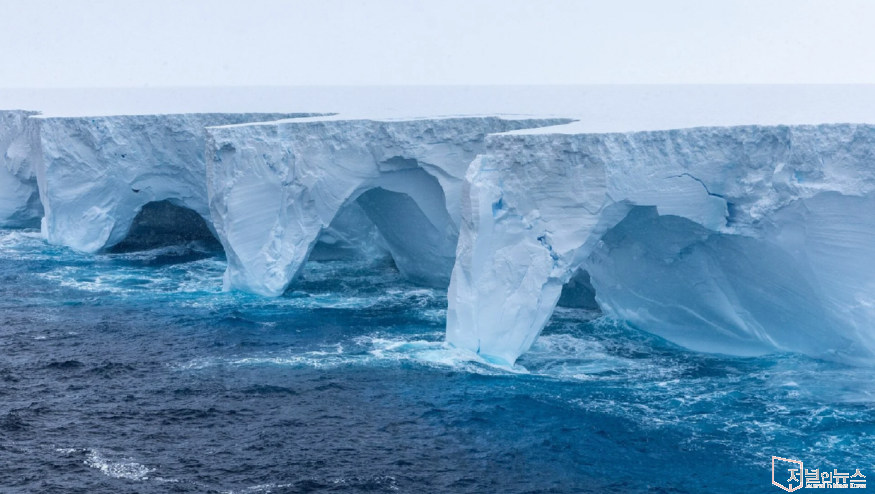The Eternal Spin: How Earth’s Largest Iceberg Defies Melting
A23a, a 1,600-Square-Mile Ice Giant, Stuns Scientists with Its Mysterious Dance in the Southern Ocean
In a fascinating twist of nature, Earth's largest iceberg, known as A23a, has defied expectations by refusing to melt as it slowly spins through the Southern Ocean.
Nearly four decades old and spanning an astonishing 1,600 square miles, this colossal chunk of ice has captivated scientists with its peculiar behavior.
Currently located about 400 miles off the coast of Antarctica, A23a is caught in a slow, mesmerizing rotation, drifting at about 15 degrees per day as it moves with a powerful ocean current, according to the British Antarctic Survey.
A video of the iceberg's graceful turn, set to Kylie Minogue's hit song "Spinning Around," went viral on social media, drawing attention to this ice titan's unique journey.
The iceberg's current “dance” is the latest chapter in a decades-long odyssey that began in 1986 when A23a first broke away from Antarctica.
Instead of melting away like most icebergs, which eventually drift into warmer waters and disintegrate, A23a has found itself in a cold oceanic vortex known as the Taylor Column.
This swirling phenomenon, created by the contours of the ocean floor, has trapped A23a in a continuous spin, keeping it far from the warmth that would spell its end.
“The iceberg and the ocean are doing a cooperative dance,” says Douglas McGeal, a glaciologist from the University of Chicago. This unusual partnership between the iceberg and the ocean's currents has given A23a an unexpected lease on life.
A23a's history is as intriguing as its presentation. When it first separated from Antarctica during the Cold War era, its movement crippled a Soviet research station that depended on it for freshwater.
For the next 30 years, the iceberg remained stuck on the seafloor, anchored in place. It wasn't until around 2020 that A23a finally broke free, beginning a journey that, by November 2023, brought it past the northernmost tip of the Antarctic Peninsula—a region where most icebergs meet their fate.
But instead of heading towards warmer waters and inevitable melting, A23a became ensnared in the Taylor Column's icy grip, delaying its demise. The iceberg, which is roughly the size of Rhode Island, continues to spin in this cold, protective embrace.
Experts like Ted Scambos, a glaciologist at the University of Colorado, are keeping a close eye on A23a, although they are unsure how long this dance will last.

"It could happen in the next year, or it could take a few years. It could be there for a long time," Scambos says. However, he reassures that A23a poses no threat, as it is unlikely to raise sea levels when it eventually melts, nor is it expected to cause problems for ships in the area.
As the iceberg continues its slow-motion spin, scientists marvel at the resilience and unpredictability of this ice giant. “I’ve been following icebergs since 2000,” Scambos reflects. “I’ve never seen one do that.”
